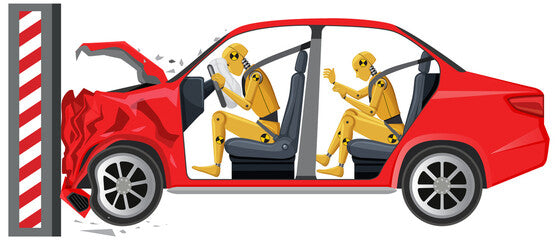
The Importance of Safety: Everything You Need to Know About Seat Belts and Airbags
-
Introduction
- Importance of road safety.
-
Seat belts: essential for protection
- How seat belts work and how they matter.
- Regulations for the use of seat belts.
-
Airbags: the crucial role in protecting occupants
- How airbags work.
- Types of airbags and their placement.
-
Maintenance and replacement
- Importance of seat belt and airbag maintenance.
- When you need to replace seat belts and airbags.
-
Child Safety
- Correct use of child restraint systems.
- The importance of properly installing side airbags.
-
Advanced technologies for safety
- Driver assistance systems.
- Future innovations in automotive safety.
-
Conclusions
- Summary of the importance of seat belts and airbags for road safety.
The Importance of Safety: Everything You Need to Know About Seat Belts and Airbags
When it comes to traveling on the road, the safety of the occupants is of primary importance. Seat belts and airbags are two essential devices that play a crucial role in protecting drivers and passengers in the event of an accident. In this article, we will explore everything you need to know about seat belts and airbags to ensure safer travel and avoid serious injuries.
Seat belts: essential for protection
Seat belts are one of the most important safety features in a vehicle. These devices help to restrain the occupants during a crash, significantly reducing the risk of serious injury or death. It is essential to always wear a seat belt while traveling, whether it is a short trip around town or a long road trip. Road regulations require the mandatory use of seat belts for all vehicle occupants.
Airbags: the crucial role in protecting occupants
Airbags are safety devices designed to inflate rapidly in the event of a collision, creating a protective barrier between the vehicle's occupants and the rigid parts of the passenger compartment. These devices help reduce the risk of head and chest injuries during a crash. Airbags are strategically placed throughout the vehicle, including front, side, and curtain airbags, to provide comprehensive protection for occupants.
Maintenance and replacement
Proper maintenance of seat belts and airbags is essential to ensure they function properly in an emergency. It is important to inspect seat belts regularly to ensure they are not damaged or worn. Additionally, airbags should be inspected during scheduled vehicle maintenance and replaced if necessary, in accordance with the manufacturer's recommendations.
Child Safety
For younger passengers, such as children, it is essential to use appropriate restraint systems, such as car seats or child safety devices. It is important to carefully follow the manufacturer's instructions and ensure that these devices are properly installed in the vehicle. It is also advisable to deactivate the side airbags when carrying children in the front seats, to avoid the risk of injury during an airbag deployment.
Advanced technologies for safety
In recent years, many advanced technologies have been introduced to further improve vehicle safety. These include driver assistance systems, such as automatic emergency braking, forward collision warning, and blind spot monitoring. Future innovations in automotive safety aim to make vehicles even safer by reducing the risk of accidents and injuries.
Conclusions
Road safety is a top priority for all drivers and passengers. Seat belts and airbags are vital devices that can make the difference between life and death in the event of an accident. Ensuring that these devices are in good condition and using them correctly can significantly reduce the risk of serious or fatal injuries on the road.
